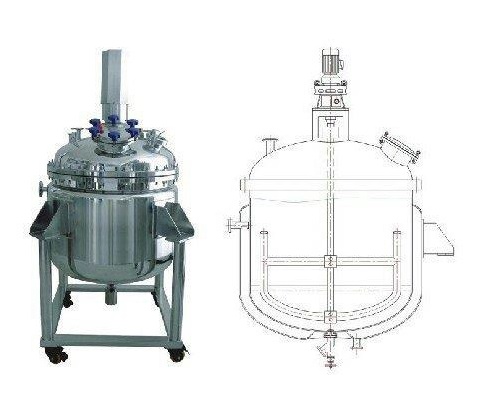The HOLL-REACTOR® is one of the most important tools in a chemical engineers arsenal for creating smaller processes through process intensification.
Molecular Collisions
It’s obvious that when two liquid reagents are brought into contact with one another, for initiating a chemical reaction, the task of bringing astronomical numbers of reagent molecules into a one-on-one contact in a minimum amount of time is a gargantuan task.
Consider this: 1 gram of H2O contains 3.34 x 1022 molecules. While other liquid reagents contain similarly large numbers of molecules per gram.
Continuous Stirred Tank Reactors
Conventionally, the Continuous Stirred Tank Reactor (CSTR) has been trying to fulfill this task alongside battling an additional host of problems. One of the most important of which is the achieving, controlling and maintaining uniform temperature distribution of the reagents within a minimum amount of time. This can require seconds, minutes, hours and even days depending on how eager the reagents want to react and how efficiently and uniformly the mixing can be evoked and maintained as far down as into the sub-Kolmogoroff molecular universe (~25 μm) of the reagent mix, where molecular clusters need to be disentangled continuously (see “Turbulence Phenomena” by J.T. Davies, University of Birmingham, England).

The economics of chemical reacting demands minimizing time and effort used for uniformly mixing reagent molecules while maintaining optimum temperature and pressure control. In general, the latter two requirements are the easiest to achieve while obtaining uniform mixing of the reagents remains to this day, the number one problem of chemical reactor design.
The above illustrations show the side view and cross-section of a typical, conventional tank reactor as most frequently used in the chemical and biochemical industries. To solve the above described problems of conventional chemical reactors, Richard Holl developed The Holl-Reactor® (US Patents) which no longer uses vigorous stirring of reagents as with the CSTR. Now, the reagents are quickly co-sheared inside a narrow annular gap established between the inner surface of a stationary tube and the outer surface of a fast spinning inner tube. The reagents are being pumped through this annular gap while their temperature is being regulated by an annular heat exchanger mantle, wrapped around the stator tube, as depicted in the following illustrations:

The main reason for the HOLL-REACTOR’s® superior performance is the replacement of agitator stirred mixing by high speed annular shear-mixing. CSTR mixing is typically characterized by high power consumption, amply described in the following pertinent publications:
1) “Mixing, Principles and Applications” by Dr. Shinjji Nagata, John Wiley & Sons
2) “Turbulence Phenomena” by Dr. J. T. Davies, Birmingham University, UK
3) “Brownian Movement” by Dr. Albert Einstein
4) “The kinematics of mixing: stretching, chaos, and transport” by J.M Ottino
Surprisingly, the power consumption of HOLL-REACTORS® are less than 20% that of CSTR’s. The explanation for this low power use is the HOLL-REACTOR’s® similarity with the principle of operation for lubricated journal bearings. The difference with the HOLL-REACTOR® being is the use of liquid reagents instead of oils for “lubrication”.
One of the new HOLL-REACTOR’s® unexpected features is the fact that it has surpassed clients requirements for selectivity and yield in certain chemical reactions. This was tested in the R&D labs of one of the world’s largest manufacturers of chemicals.
Next week in Part 2, we will talk about various applications of the Holl-Reactor®.
Let COSTELLO and the HOLL-REACTOR® help you design a small intensified chemical process that saves CAPEX and OPEX!
Phone: 310-792-5870 Email: rcca@rccostello.com
Website: rccostello.com

